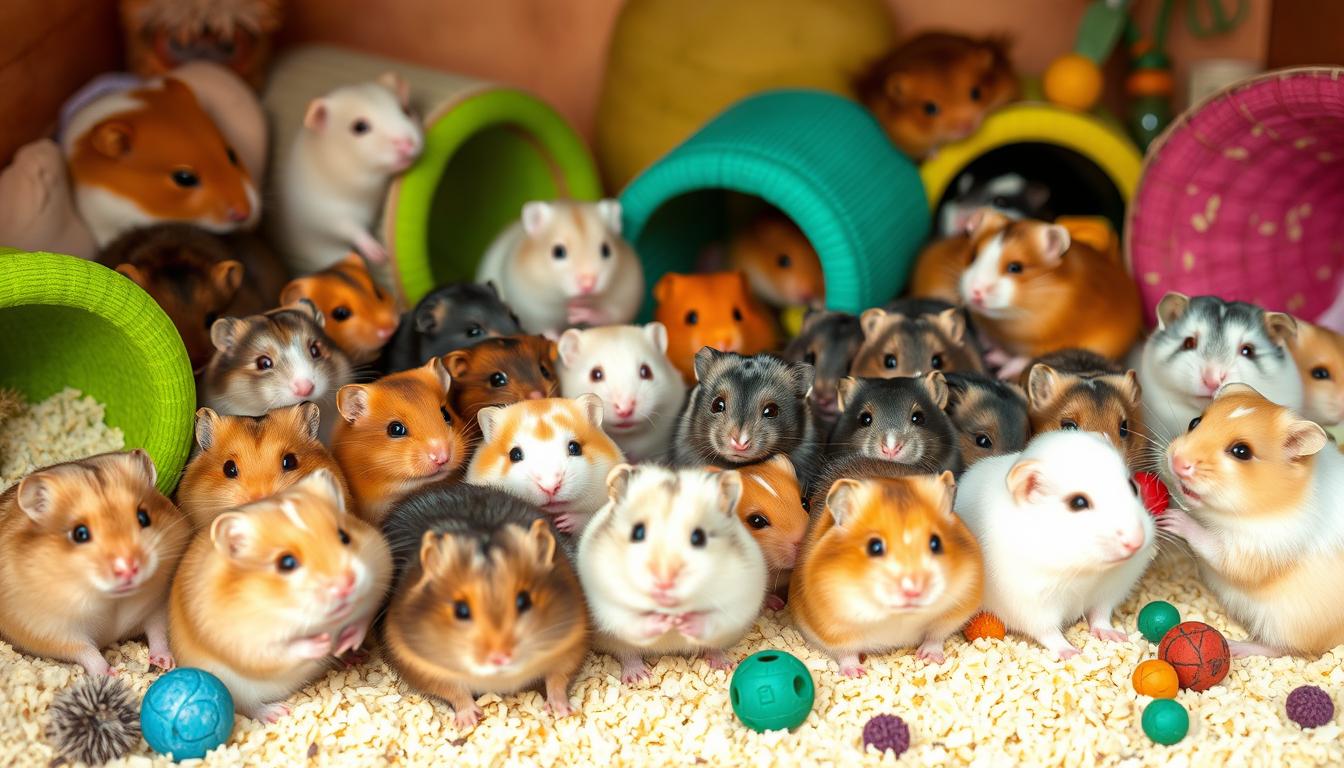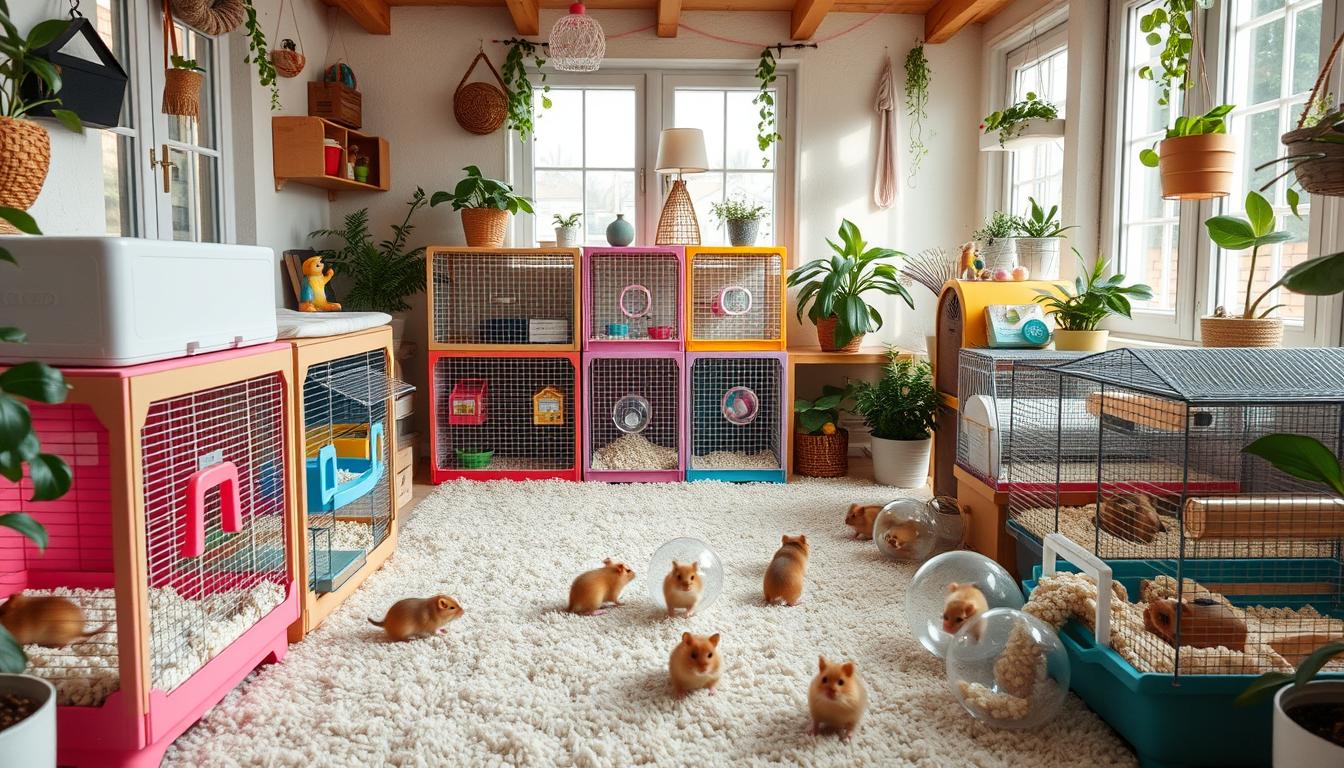Let me take you back to 2009, when my daughter Emma, all of eight years old, dragged me into a pet store in Austin, Texas, pointing at a tiny Campbell’s dwarf hamster spinning on a wheel like it was training for the Olympics. That little guy, Speedy, was the start of my 16-year journey as a hamster breeder. Back then, I thought all hamsters were pretty much the same—cute, furry, nocturnal. Boy, was I wrong. Each breed has its own quirks, needs, and personality, and choosing the right one for you or your family is a bigger decision than most folks realize. Over the years, I’ve bred Chinese, Winter White, Syrian, and even some Roborovski hamsters, and I’ve learned a thing or two about what makes each breed tick. So, let’s dive into the world of hamster breeds, break down their characteristics, and figure out which one might be your perfect match.
Why Breed Matters
When I started breeding, I approached it like an engineering problem—systematic, data-driven, maybe a bit obsessive. I kept spreadsheets on everything: litter sizes, temperament scores, even how much each hamster hoarded in their cheek pouches. What I found was that breed differences aren’t just about looks. They’re about behavior, care needs, and how well they fit into your life. A Syrian hamster might be perfect for a kid who wants a cuddly pet, but a Roborovski could drive you up the wall if you’re not ready for their high-octane energy. Choosing the wrong breed is one of the biggest mistakes I see beginners make, and I’ve been there myself—trust me, I learned the hard way when I tried housing two Syrians together early on. Spoiler: they don’t share space.
Let’s walk through the main hamster breeds you’ll come across, focusing on their traits, care requirements, and who they’re best suited for. I’ll sprinkle in some tips from my breeding program, Lone Star Hamsters, and a few lessons from my years of trial and error.
Syrian Hamsters: The Classic Choice
Syrians, often called “golden hamsters” or even “teddy bear hamsters” in pet stores, are the big guys of the hamster world. They’re about 5-7 inches long, with plush coats that come in colors like golden, cream, or even patterned varieties like tortoiseshell. I’ve bred dozens of Syrians over the years, and one thing stands out: they’ve got personality for days. My old breeding buck, Thunder, was a prime example—calm, curious, and loved being handled, but he’d rearrange his cage like an interior designer every night.
Characteristics
- Temperament: Friendly and handleable, especially if socialized early. They’re like the labradors of hamsters—great for kids or first-time owners.
- Lifespan: 2-3 years with good care.
- Activity Level: Active but not frantic. They love their wheels but also enjoy lounging in a cozy nest.
- Size and Space Needs: Bigger than dwarfs, so they need a cage at least 24×12 inches with 6 inches of bedding for burrowing. I’ve seen Syrians get stressed in anything smaller.
Care Tips
Syrians are solitary, and I can’t stress this enough. I once thought I could house two young males together because they seemed to get along. Big mistake. By week two, they were staging cage wars. Each Syrian needs its own cage to avoid fights. They’re also sensitive to Texas heat, so in summer, I keep their room at 68-75°F with a backup cooling system—think frozen water bottles wrapped in towels for emergencies.
Best For
Families, kids over 6, or anyone wanting a hamster they can handle and bond with. They’re also great for folks who like watching hamster antics—Syrians are natural performers.
Cost and Reality Check
A Syrian from a reputable breeder like me might run $15-$30, depending on coat type. Pet store prices are often lower, but you risk poor genetics or health issues. Expect to spend $100-$150 upfront on a proper cage, wheel, and supplies, plus $10-$20 a month on food and bedding. Time-wise, plan on 20 minutes daily for cleaning, feeding, and interaction.
Chinese Hamsters: The Gentle Underdogs
Chinese hamsters are my personal favorite, and I’ve built my breeding program around them. They’re smaller than Syrians, about 4 inches long, with sleek, mouse-like bodies and a distinctive dark stripe down their backs. My breeding doe, Hazel, is a perfect example—she’s calm, almost meditative, and loves climbing more than wheeling. Chinese hamsters are less common in pet stores, which is a shame because their temperament is gold.
Characteristics
- Temperament: Shy but gentle. They take time to trust you but become super handleable with patience. My daughter Emma spent weeks taming Hazel’s litter, and now those pups are some of the calmest I’ve ever bred.
- Lifespan: 2.5-3 years, sometimes longer with excellent care.
- Activity Level: Moderate. They’re climbers, so they love multi-level cages with tubes or branches.
- Size and Space Needs: A 20×10-inch cage works, but more space is better. They need vertical elements for climbing.
Care Tips
Chinese hamsters are sensitive to stress, so keep their environment stable. I learned this during a Texas heat wave when my AC failed—my Chinese hamsters started showing signs of torpor (a sort of mini-hibernation) until I got the room cooled down. Aim for 65-75°F and avoid sudden changes. They’re also prone to diabetes, so I stick to low-sugar diets—think high-quality pellets and occasional veggies, no fruit treats.
Best For
Intermediate owners or patient beginners who don’t mind putting in time to build trust. They’re great for adults or older kids who enjoy observing subtle behaviors.
Cost and Reality Check
Expect to pay $20-$40 for a Chinese hamster from a breeder, as they’re less common. Cage setup is similar to Syrians, around $100-$150, but you’ll need to invest in climbing structures. Monthly costs are about $10-$15. Be prepared to spend extra time on socialization—15 minutes daily for the first month or two.
Winter White Hamsters: The Social Dwarfs
Winter Whites, sometimes called Djungarian hamsters, are part of the dwarf family, topping out at 3-4 inches. They get their name from their ability to turn lighter in winter, though this rarely happens in captivity due to artificial lighting. I’ve bred Winter Whites for their calm, social nature—my breeding pair, Snowball and Frost, produced pups that were so chill, they’d nap in my hand during cage cleanings.
Characteristics
- Temperament: Social and less territorial than other dwarfs. They can sometimes be housed in same-sex pairs if introduced young, but I always advise caution.
- Lifespan: 1.5-2.5 years.
- Activity Level: Busy but not as hyper as Roborovskis. They love burrowing and exploring.
- Size and Space Needs: A 20×10-inch cage is fine, but they thrive with deep bedding (8 inches or more).
Care Tips
Winter Whites are hardy but sensitive to humidity. In Austin’s muggy springs, I run a dehumidifier in my breeding room to keep it below 50%. They’re also prone to wet tail if stressed, so I’m obsessive about clean cages—spot clean daily, full clean weekly. If you’re considering pairs, watch for signs of aggression. I tried pairing two sisters once, and by month three, they were bickering over wheel time.
Best For
Beginners who want a smaller hamster or owners interested in observing social behaviors. They’re great for teens or adults who enjoy watching hamsters interact.
Cost and Reality Check
Winter Whites cost $15-$25 from breeders. Cage setup is slightly cheaper than Syrians—$80-$120—but you’ll need extra bedding for burrowing. Monthly costs are $10-$15. If housing pairs, double your budget for space and supplies, and be ready to separate them if fights break out.
Roborovski Hamsters: The Tiny Tornados
Roborovskis, or “Robos,” are the smallest breed, barely hitting 2 inches. They’re lightning-fast, with sandy coats and white eyebrow-like markings. I bred a small line of Robos a few years back, and let me tell you, they’re like tiny racecars. One of my pups, Zippy, could clear a 3-foot cage in seconds, leaving me scrambling to catch him during a cleaning session.
Characteristics
- Temperament: Skittish and not big on handling. They’re more for watching than cuddling.
- Lifespan: 3-3.5 years, the longest of the breeds.
- Activity Level: Insanely high. They need a big wheel and lots of space to burn energy.
- Size and Space Needs: Minimum 24×12 inches, but bigger is better. They need tons of enrichment to avoid stress.
Care Tips
Robos are escape artists. I once found Zippy in a shoe because my cage lid wasn’t secure enough. Use tight-fitting lids and check for gaps. They’re also sensitive to temperature swings, so I keep them at 68-75°F year-round. Because they’re so active, they need constant stimulation—think tunnels, scatter feeding, and multiple wheels. I rotate enrichment weekly to keep them engaged.
Best For
Experienced owners or folks who want a low-maintenance pet to observe, not handle. They’re not great for young kids due to their speed and skittishness.
Cost and Reality Check
Robos cost $15-$30, but their cage setup can hit $120-$200 because of the space and enrichment needs. Monthly costs are $10-$20, depending on how much bedding they go through. Time commitment is lower for interaction but higher for cage maintenance—30 minutes daily to keep their environment stimulating.
Campbell’s Dwarf Hamsters: The Feisty Cousins
Campbell’s dwarfs are often confused with Winter Whites, but they’re a distinct breed with stockier bodies and a wider range of coat colors. They’re about 3-4 inches long and have a reputation for being nippy, but I’ve bred some incredibly sweet ones by focusing on temperament. My old buck, Nugget, was a Campbell who’d climb into my sleeve during cage cleanings, bold as brass.
Characteristics
- Temperament: Variable—some are friendly, others feisty. Socialization is key.
- Lifespan: 1.5-2 years.
- Activity Level: High, with a love for burrowing and wheel-running.
- Size and Space Needs: 20×10 inches minimum, with deep bedding.
Care Tips
Campbells can be prone to diabetes, like Chinese hamsters, so I avoid sugary treats and stick to a balanced pellet diet. They’re also territorial, so housing them in pairs is risky unless you’re experienced. I tried it once, and let’s just say the cage looked like a hamster wrestling ring by morning. Keep their environment clean to prevent health issues, and monitor for nippy behavior—gentle handling from a young age makes a big difference.
Best For
Intermediate owners willing to put in time for socialization. They’re good for teens or adults who don’t mind a bit of attitude.
Cost and Reality Check
Campbells run $15-$25, with cage costs similar to Winter Whites ($80-$120). Monthly expenses are $10-$15. Expect to spend extra time on taming—20 minutes daily for the first few months.
Common Mistakes to Avoid
I’ve made my share of blunders over the years, and I see beginners make the same ones. Here are the big ones:
- Picking a Breed for Looks Alone: A cute coat doesn’t mean a good fit. I focused on appearance early on and ended up with some unhealthy litters. Temperament and health come first.
- Small Cages: Hamsters need space. I’ve seen pet store “starter kits” that are way too small—don’t fall for it.
- Ignoring Climate: In Texas, summer heat can be deadly. I’ve got spreadsheets tracking temperature spikes that stressed my hamsters. Invest in cooling solutions.
- Skipping Socialization: Especially with Chinese or Campbell’s, skipping handling early on can lead to nippy adults. Emma’s patient approach with our Chinese litters proved this.
- Overfeeding Treats: Sugary treats cause health issues, especially in dwarfs. Stick to veggies and occasional seeds.
Seasonal Considerations
Here in Austin, seasons matter. Winter breeding (November-February) often produces calmer pups due to shorter daylight hours, which I’ve tracked across 12 years of data. Summer breeding (June-August) requires extra vigilance—fans, cooling mats, and constant temperature checks. I’ve learned to pause breeding in July when temperatures hit 90°F, as it stresses the does. Wherever you are, check your local climate and adjust your care routine accordingly.
Safety First
Hamster welfare is non-negotiable. Never use plastic tube habitats—poor ventilation and hard to clean. Avoid cedar or pine bedding; they cause respiratory issues. Always have a vet lined up who knows small animals—I learned this after a late-night scramble with a sick pup. And please, don’t impulse-buy a hamster without researching its needs. They’re small, but they’re not simple.
Finding Your Match
Choosing a hamster breed comes down to your lifestyle. Want a cuddly pet? Go Syrian. Love watching intricate behaviors? Try a Chinese or Winter White. Got the patience for a speed demon? Robos might be your thing. Campbell’s are great if you’re ready for a challenge. My advice? Visit a breeder or a hamster show (the Texas Small Animal Breeders Association hosts great ones) and observe the breeds in person. Talk to owners, ask about temperament, and handle a few if possible. My daughter Emma still insists on “interviewing” every hamster before we adopt it out—she’s got a knack for spotting the perfect match.
Final Thoughts
After 16 years of breeding, I can tell you that hamsters are more than just pets—they’re little personalities that teach you patience, observation, and respect for the small things. My breeding room is quieter now than it was when I started, but every litter still feels like a small victory. Whether you’re a beginner or leveling up to a more challenging breed, take your time, do your homework, and choose a hamster that fits your life. And if you’re ever in Austin, swing by Lone Star Hamsters—Emma and I will show you the ropes.




